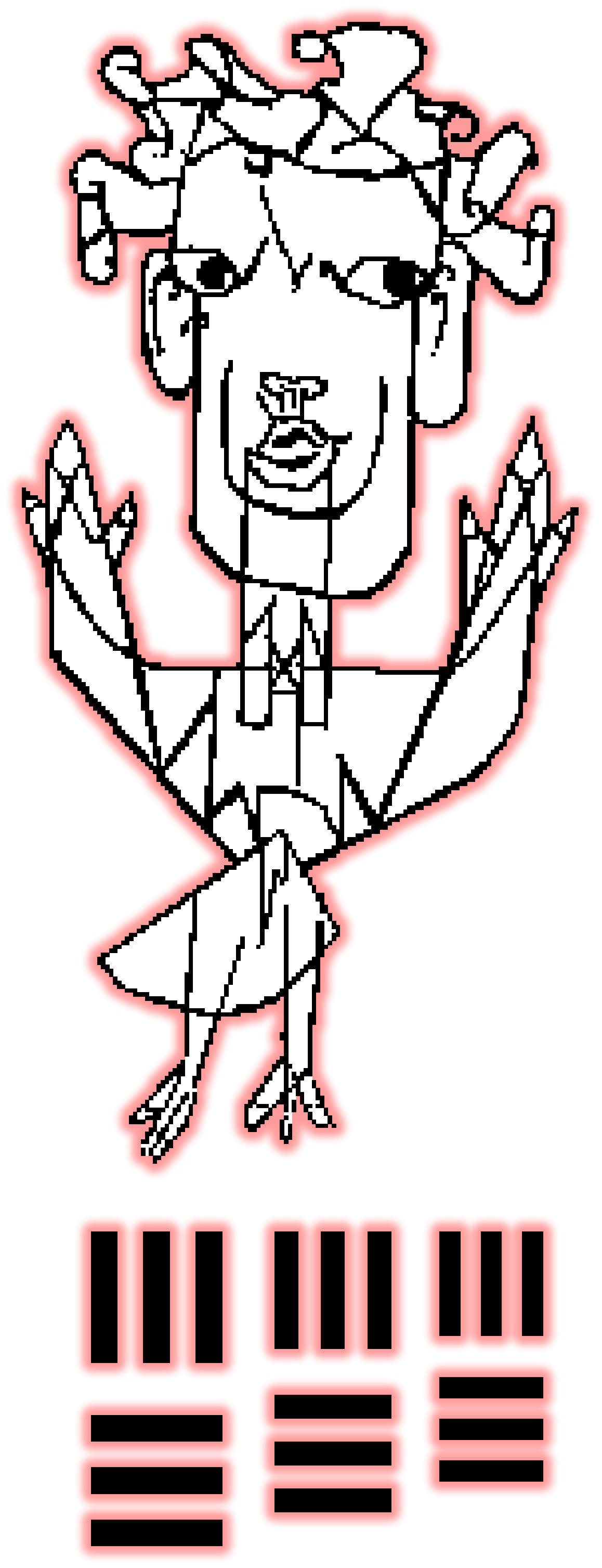When digital mediations replaced the typically continuous analog signal with discrete data, artifacts like clipping, truncation, and quantization were introduced, raising questions about authenticity and integrity.
This shift led to a crisis of fidelity, challenging the reliability of the signal.
This shift led to a crisis of fidelity, challenging the reliability of the signal.

The Collapse of PAL (rendered version, 2010)
.
In the live television performance the Collapse of PAL, the Angel of History reflects on the move from analog Phase-Alternate Line signal (PAL; 625 total, 576 active lines) to Digital Video Broadcasting (DVB).
She expresses a desire to restore what has been broken, but decides to remain a passive witness,
rationalizing that the end of PAL was inevitable, because the signal was “just not good enough.”
New to digital image processing, the Angel expects a final, perfect standard.
But unbeknownst to her, the digital has actually trapped her in a Hologram PenRose-Stairs to Nowhere - or what engineers simply call “Progress.“ From then onwards, she is forced to keep migrating along an endless line of upgrades, following the subsequent phases of digital image processing, while invisible traces of PAL linger, haunting ‘better,’ digital signals.
She expresses a desire to restore what has been broken, but decides to remain a passive witness,
rationalizing that the end of PAL was inevitable, because the signal was “just not good enough.”
New to digital image processing, the Angel expects a final, perfect standard.
But unbeknownst to her, the digital has actually trapped her in a Hologram PenRose-Stairs to Nowhere - or what engineers simply call “Progress.“ From then onwards, she is forced to keep migrating along an endless line of upgrades, following the subsequent phases of digital image processing, while invisible traces of PAL linger, haunting ‘better,’ digital signals.
